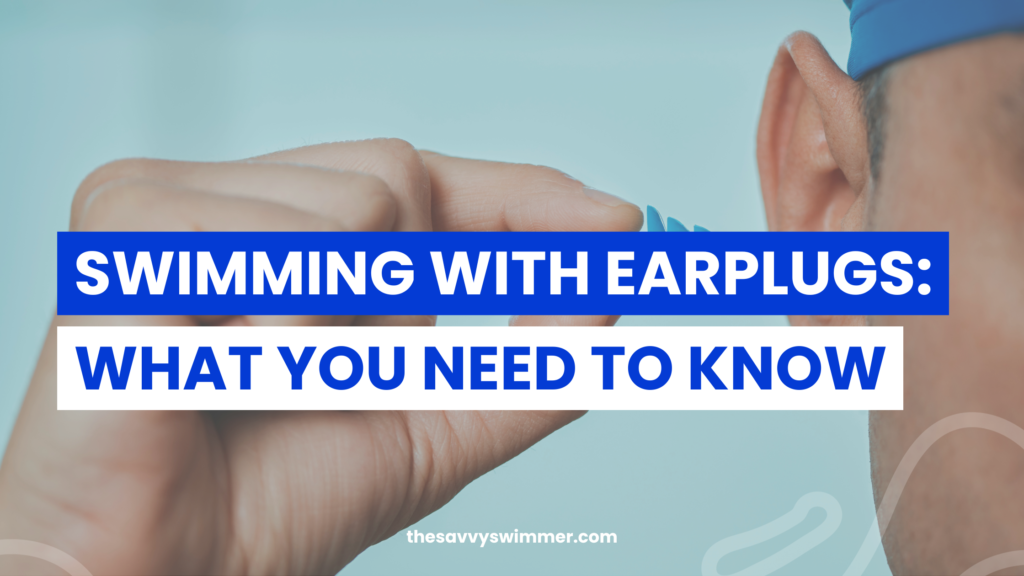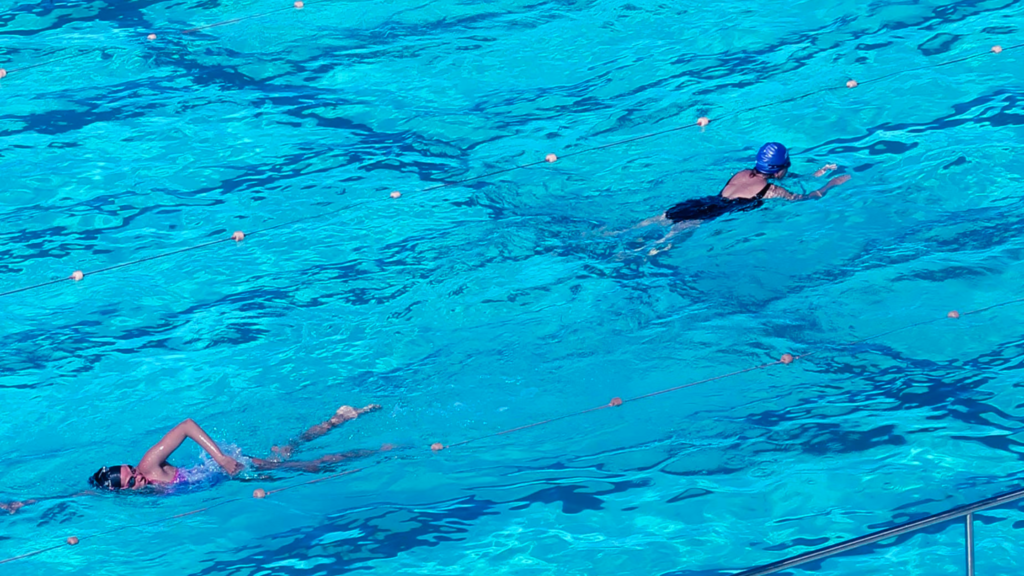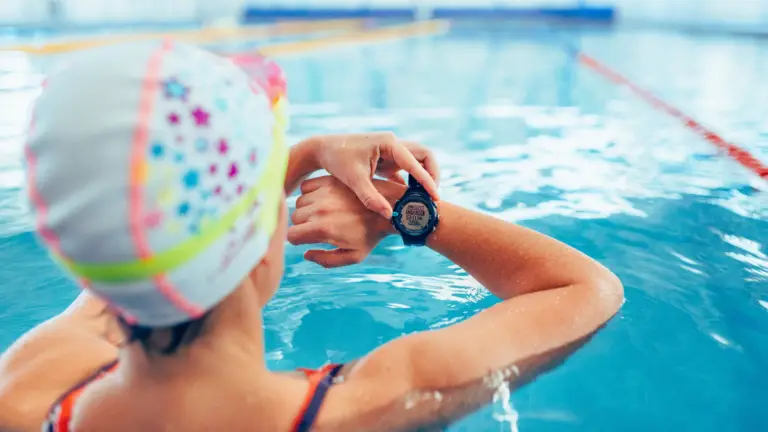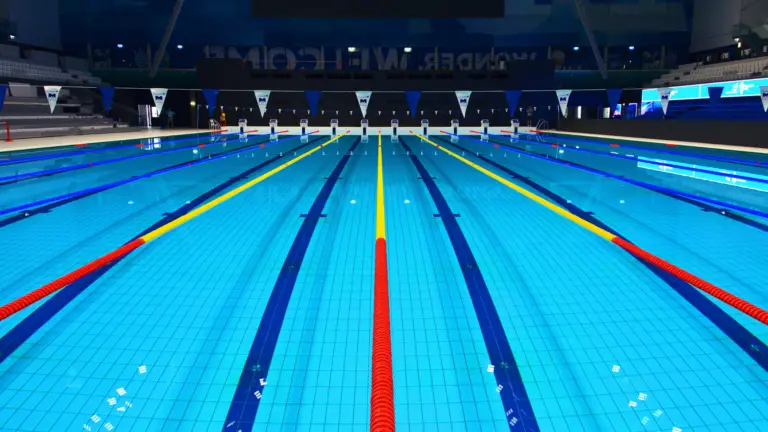
Swimming with earplugs is not only a practical choice but also a smart one when it comes to enjoying your time in the water while keeping your ears safe. Earplugs provide essential ear protection and offer numerous benefits, including preventing ear infections and reducing the risk of swimmer’s ear. There are various options available as well as a correct way to ensure maximum effectiveness. Let’s take a look!
- Swimming with earplugs is a practical and smart choice to protect your ears while enjoying water activities.
- Earplugs can prevent ear infections, including swimmer’s ear, by keeping moisture and bacteria out of the ear canal.
- They are also beneficial for individuals who work in hot environments, as they can keep sweat out of the ears.
- Silicone earplugs are the recommended choice for swimming due to their comfort, reusability, and better sensory awareness in the water.
- Proper usage of earplugs, including insertion, removal, cleanliness, and avoiding diving with them, is essential for optimal effectiveness.
The Importance of Ear Protection While Swimming
With the right earplugs, you can shield your ears from potential harm and enjoy your swim without worrying about painful ear infections. Swimming with earplugs is highly recommended as they can help prevent common ear infections, such as swimmer’s ear. This condition occurs when water remains in the outer ear canal, creating a moist environment for bacterial growth. By using earplugs, you create a barrier that keeps water out and reduces the risk of infection.
Not only are ear infections painful, but they can also be a hassle to deal with. They can disrupt your swimming routine and require medical treatment, which can be both time-consuming and expensive. That’s why it’s important to take preventive measures, such as using earplugs, to avoid these unwanted situations.
Choosing the Right Earplugs for Swimming
When it comes to selecting earplugs for swimming, there are various options available. Off-the-shelf earplugs made from silicone or putty are commonly found in stores and offer a cost-effective solution. These earplugs are reusable, comfortable, and provide adequate protection against water entering the ear canal.
If you prefer a more customized fit, you can opt for custom-fit earplugs. These earplugs are designed based on the shape and size of your ear, ensuring a snug and secure fit. While custom-fit earplugs may be slightly more expensive, they offer enhanced comfort and a higher level of protection.
Overall, silicone earplugs are considered the best choice for swimming. They are durable, reusable, and provide better sensory awareness in the water compared to other materials. Regardless of the type of earplugs you choose, it’s important to keep them clean and dry to maintain hygiene and prevent any potential ear infections.
| Types of Earplugs | Advantages |
|---|---|
| Off-the-shelf earplugs | Cost-effective, reusable, and provide adequate protection. |
| Custom-fit earplugs | Offer enhanced comfort and a higher level of protection. |
| Silicone earplugs | Durable, reusable, and provide better sensory awareness. |
To ensure the effectiveness of earplugs, it’s essential to use them correctly. Proper insertion and removal techniques are crucial. Additionally, it’s important to avoid diving while wearing earplugs, as the pressure can cause discomfort and affect their effectiveness. By following these simple guidelines, you can enjoy your swim while protecting your ears from potential harm.
Choosing the Right Earplugs for Swimming

When it comes to earplugs for swimming, finding the perfect fit and material is essential for optimal comfort and protection. There are various types of earplugs available, each with its own benefits, so it’s important to choose the ones that best suit your needs.
Silicone Earplugs: Silicone earplugs are a popular choice for swimmers due to their durability, comfort, and reusability. Made from soft, flexible silicone, these earplugs provide a snug fit that effectively seals the ear canal, preventing water from entering. They are also easy to clean, making them a hygienic option for regular use.
Custom-fit Earplugs: For those looking for a tailored solution, custom-fit earplugs are an excellent option. These earplugs are made from a mold of your ear, ensuring a precise fit that offers maximum comfort and protection. While they may be more expensive than off-the-shelf alternatives, custom-fit earplugs provide a personalized solution that can be well worth the investment for serious swimmers.
Earplugs for Adults
For adults, silicone earplugs are generally the preferred choice due to their versatility and effectiveness. They are available in different sizes to accommodate varying ear shapes and sizes. Look for earplugs that have a secure fit without causing discomfort, allowing you to swim with peace of mind.
Earplugs for Water Sports
If you enjoy engaging in water sports such as surfing, kayaking, or paddleboarding, it’s important to choose earplugs that can withstand the demands of these activities. Look for earplugs that are specifically designed for water sports, offering features such as a leash or cord attachment to prevent loss in the water. These earplugs are typically made from durable materials that can withstand exposure to water and provide reliable protection.
| Earplug Type | Material | Features |
|---|---|---|
| Silicone Earplugs | Silicone | Reusable, easy to clean |
| Custom-fit Earplugs | Silicone or putty | Precise fit, maximum comfort |
| Earplugs for Water Sports | Durable materials | Leash or cord attachment |
Using Earplugs Correctly for Swimming
Knowing the correct way to use earplugs while swimming ensures maximum effectiveness and minimizes the risk of any discomfort or complications. Whether you’re a seasoned swimmer or just starting out, following these simple steps will help you make the most of your ear protection.
- Before inserting the earplugs, make sure your hands are clean and dry. This will prevent any dirt or bacteria from entering your ears.
- Gently roll the earplugs between your thumb and index finger to compress them into a tight, narrow cylinder.
- With your opposite hand, reach over your head and pull up on the outer ear to straighten the ear canal.
- Insert the compressed earplug into the ear canal and hold it in place for a few seconds until it expands and forms a seal.
- Once the earplugs are properly inserted, it’s important to avoid touching or adjusting them while swimming, as this could break the seal and compromise their effectiveness.
To remove the earplugs, gently pull on the stem or tab, taking care not to tug too hard or yank them out forcefully. If you experience any pain or discomfort while removing the earplugs, stop immediately and seek professional advice.
👂 Expert Tip: Properly using earplugs while swimming not only protects your ears from water-related infections but also enhances your overall swimming experience.
It’s worth noting that earplugs should be cleaned thoroughly after each use to prevent the buildup of bacteria or earwax. Follow the manufacturer’s instructions for cleaning and maintenance, or consult a healthcare professional if you have any concerns.
| Earplug Type | Advantages |
|---|---|
| Silicone Earplugs | Comfortable, reusable, provide better sensory awareness in the water |
| Putty Earplugs | Custom-fit option, moldable to the shape of your ear |
Using earplugs for swimming is a cost-effective way to prevent ear irritation and infections, allowing you to enjoy your time in the water without any worries.
Benefits of Swimming with Earplugs
By taking the simple step of swimming with earplugs, you can experience a range of benefits that enhance your water activities while safeguarding your ears. Whether you’re a professional athlete or a casual swimmer, here are some reasons why using earplugs is highly recommended:
- Prevention of Ear Infections: One of the main benefits of swimming with earplugs is the reduced risk of developing ear infections, especially swimmer’s ear. This condition occurs when water remains in the outer ear canal, creating a moist environment for bacterial growth. Earplugs act as a barrier, preventing water from entering the ears and reducing the likelihood of infection.
- Comfort and Sensory Awareness: There are various types of earplugs available, including off-the-shelf and custom-fit options made from silicone or putty. Silicone earplugs are the top choice for swimming due to their comfort and reusable nature. They also provide better sensory awareness in the water, allowing you to enjoy your swim without feeling disconnected or restricted.
When using earplugs for swimming, it is important to follow proper usage guidelines. Keep your earplugs clean and store them in a hygienic case to prevent any bacterial build-up. Additionally, avoid diving or exposing your earplugs to excessive pressure, as this can cause discomfort or dislodging.
| Types of Earplugs | Advantages |
|---|---|
| Silicone Earplugs | Comfortable, reusable, provide better sensory awareness |
| Putty Earplugs | Custom-fit, moldable to ear shape |
| Off-the-shelf Earplugs | Convenient, readily available |
Swimming with earplugs is a cost-effective way to prevent ear irritation and infections while enjoying your water activities. Whether you’re swimming for leisure, exercise, or professional purposes, the benefits of using earplugs cannot be ignored.
Don’t have earplugs and wondering how to get water out of your ears after swimming? Check out our article: Expert Tips: How to Get Water Out of Your Ear After Swimming.
Conclusion
Swimming with earplugs is highly recommended to prevent ear infections, such as swimmer’s ear. This condition occurs when water remains in the outer ear canal, creating a moist environment for bacterial growth. By using earplugs, you can keep water out of your ears and reduce the risk of infection. It’s especially important for children, who are more prone to ear infections, to wear earplugs while swimming.






